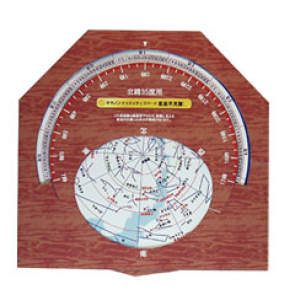Aquí tenéis dos maquetas recortables muy interesantes para ser utilizadas en clase de ciencias por los profesores que lo deseen, un Planisferio y un Reloj de Sol, podéis descargar otros papercraft educativos relacionados haciendo click Aquí. También podéis seguirnos haciendo click en el Me Gusta de nuestra página de Facebook.
.
Planisferio / Planisphere.
Download 7 páginas – Instrucciones

Papercraft de un Planisferio / Planisphere.
Reloj de sol / Sundial.
Download 10 páginas – Instrucciones

Papercraft de un Reloj de sol / Sundial.
Curiosidades:
![]() Un planisferio celeste es una carta estelar en forma de 2 discos ajustables que giran sobre un pivote común. Puede ajustarse para mostrar las estrellas visibles en un momento dado. Se emplea para ayudar en el reconocimiento de estrellas y constelaciones. El astrolabio es un predecesor del moderno planisferio. Fuente: Wikipedia y http://cp.c-ij.com/.
Un planisferio celeste es una carta estelar en forma de 2 discos ajustables que giran sobre un pivote común. Puede ajustarse para mostrar las estrellas visibles en un momento dado. Se emplea para ayudar en el reconocimiento de estrellas y constelaciones. El astrolabio es un predecesor del moderno planisferio. Fuente: Wikipedia y http://cp.c-ij.com/.
El reloj de sol es un instrumento usado desde tiempos muy remotos con el fin de medir el paso de las horas, minutos y segundos (tiempo). En castellano se le denomina también cómo cuadrante solar. Emplea la sombra arrojada por un gnomon oestilo sobre una superficie con una escala para indicar la posición del Sol en el movimiento diurno. Según la disposición del gnomon y de la forma de la escala se puede medir diferentes tipos de tiempo, siendo el más habitual el tiempo solar aparente. La ciencia encargada de elaborar teorías y reunir conocimiento sobre los relojes de sol se denomina gnomónica. Fuente: Wikipedia and http://cp.c-ij.com/.
![]() A planisphere is a star chart analog computing instrument in the form of two adjustable disks that rotate on a common pivot. It can be adjusted to display the visible stars for any time and date. It is an instrument to assist in learning how to recognize stars and constellations. The astrolabe, an instrument that has its origins in the Hellenistic civilization, is a predecessor of the modern planisphere. Wikipedia y http://cp.c-ij.com/.
A planisphere is a star chart analog computing instrument in the form of two adjustable disks that rotate on a common pivot. It can be adjusted to display the visible stars for any time and date. It is an instrument to assist in learning how to recognize stars and constellations. The astrolabe, an instrument that has its origins in the Hellenistic civilization, is a predecessor of the modern planisphere. Wikipedia y http://cp.c-ij.com/.
A sundial is a device that tells the time of day by the apparent position of the Sun in the sky. In common designs such as the horizontal sundial, the sun casts a shadow from its style onto a surface marked with lines indicating the hours of the day. The style is the time-telling edge of the gnomon, often a thin rod or a sharp, straight edge. As the sun appears to move across the sky, the shadow-edge aligns with different hour-lines. Those sundials that directly measure the sun’s hour-angle by the shadow of an edge must have that edge parallel to the axis of the Earth’s rotation to tell the correct time throughout the year Wikipedia. and http://cp.c-ij.com/.
